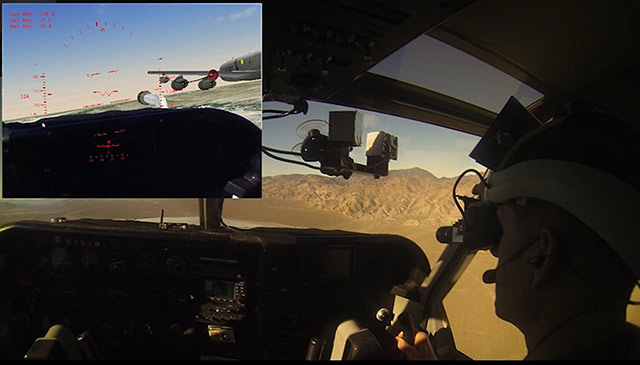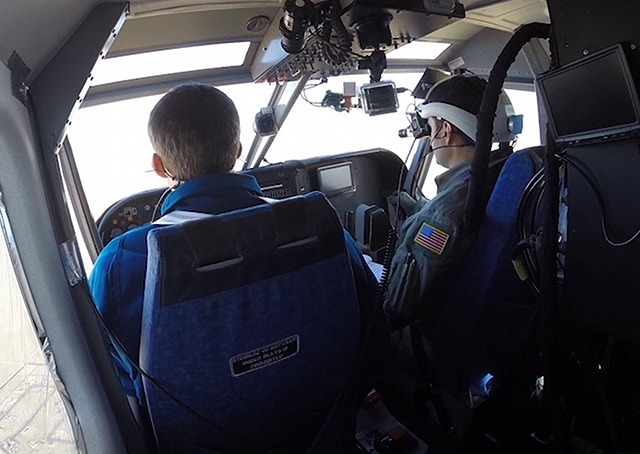
The pilot next to you is wearing a helmet with a computer-generated image placed over the actual outside view. You have no idea he is about to collide with another airplane. To the pilot with the helmet, the simulation is real enough to cause a scare.
Systems Technology, a firm honored by the U.S. Small Business Administration at a White House ceremony in 2012, began testing its in-flight simulator last spring with grants from NASA. The funds allowed the system, which consists of a helmet and a simple laptop, to be tested at the National Test Pilot School in Mojave, California.
So far the simulation has provided a computer-generated image of a refueling tanker just 70 feet ahead, a refueling line flowing behind one wing inviting the pilot to link up and refuel. A NASA pilot who flew the simulation ended up with pilot-induced oscillations, causing him to admit after the flight that his legs were shaking. It also could be used on a tanker aircraft to help refueling operators conduct a mission with a trailing aircraft that isn’t actually there. Another obvious application is for training pilots in formation flying.
The system also could be used to allow pilots to land on a fake airport, runway and all, but at 5,000 feet. Once the pilot with the helmet begins his full-stall touchdown the safety pilot takes over.
Systems Technology CEO David R. Landon said a new series of joint Air Force and NASA Armstrong Flight Research Center tests will begin next year. They will put the system in a King Air and fly formation on another King Air without it to see how it works. They also will compare virtual runway landings with those made by a King Air without the system. The system has been tested at Edwards Air Force Base. Landon also has met with a commercial jet manufacturer that has expressed interest in using the system to check new aircraft performance. Details are proprietary.
Landon, a former Navy pilot, said the system could be used in small aircraft to simulate instrument approaches. Cost is not yet determined but depends on advancements in helmet-mounted devices that are becoming less expensive. If helmets reach a few hundred dollars, flight schools might find the system affordable, Landon said.
“Now every aircraft becomes a simulator,” Landon said. “You can put it into formation flight. If you run into the simulated aircraft, no big deal.” All flights are recorded. It could be ready for commercial use in a year, he said.




